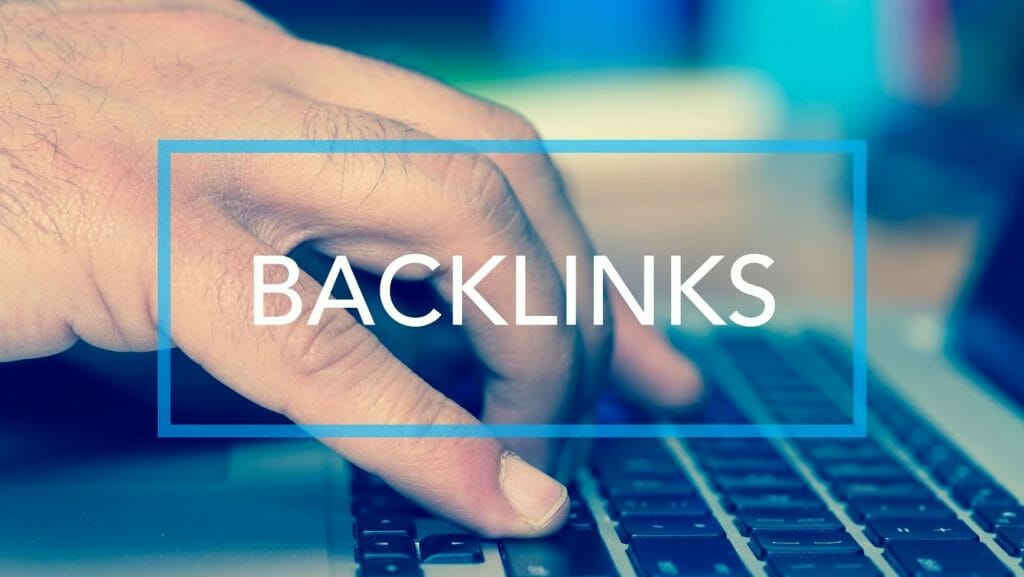SEO (Search Engine Optimization) is one of the most effective ways to increase site traffic and enhance your organic rankings.
Backlinks are the most important type of SEO content for search engines to see, and the majority of them are nofollow. The nofollow attribute ensures that search engines don’t recommend your links to other sites. In fact, Google has a rule that says your site must receive a large number of nofollow links to rank well in the search engine results pages (SERP). How Can No-follow Backlinks Improve Your Site’s Ranking?
Backlinks are the most powerful ranking factors, that impact a website’s ranking. This is why you always see them in your rankings. However, many marketers fail to understand the importance of them. Many people do not realize how important it is to have backlinks, that is a huge mistake. It is true that backlinks can not make your content better, but they can make people think it is better, and it can even make them think they read it in a different way. How can no-follow backlinks help your site’s ranking?
For those who have never dealt with SEO, the term nofollow link may sound like a link that cannot be followed. This insight is correct in a way, but for the success of your website it is better to have advanced knowledge on the subject. Nofollow links play a much more important role in the SEO world than for ordinary people. Without including them in the list of backlinks to get high positions in the SERPs is hardly possible, and in this article we will try to explain why.
What is a nofollow link and what is the difference?
The average internet user will not be able to tell the difference, or needs to distinguish between one no-follow link and another. The difference is formal and can only be noticed by those who know how to look into the HTML code of the page. At first glance, no-follow links and regular (or do-follow) links look similar. But no-follow links have a certain property in their code.
The code for a typical no-follow link looks like this:
<a href=http://yoursuperbestsitehere.com rel=nofollow>your page</a>
A normal do-follow link, however, looks like this:
<a href= http://yoursuperbestsitehere.com>your page</a>
Therefore, by default, all normal links will use the code as in the second example. And so far it has worked well, but something made Google invent no-follow links. You can also read this article from Ahref’s blog to better understand this topic.
What are these links for?
A no-follow link tells search engine spiders not to crawl and index the page it indicates. This means that such a site will not get any change in its ranking. In theory, this is rather unfortunate for website owners who are striving to improve their site’s ranking. But first, this is only a first impression, and second, if such an attribute was invented, there were objective reasons for it. It is a fact that about 15-20 years ago, the internet was full of spammers who left their spam messages under every interesting post on blogs, social networks, press releases, etc. To relieve the Internet community of all this, an HTML attribute was invented to discourage spammers from doing their dirty work: rel=nofollow. As of now, all links on blogs, social networks and forums have become useless and bring nothing to the senders.
How does it all work?
From the beginning, no-follow links were ignored by Google. Links with this attribute have simply never been indexed or crawled. However, in September 2019, Google announced a change in its position on no-follow links. Google therefore began to treat them not as commands to be ignored, but as directions. This means that a no-follow link can now sometimes be examined by search engine robots. If the content to which the page links is valuable, then a no-follow link can improve the ranking of the page! In addition, Google has also introduced some new attributes. They are also treated as hints and in a sense can be considered as explanations or clarifications of the rel=nofollow attribute:
- Rel=sponsored attribute – indicates the presence of compensation schemes such as sponsorship, advertising, etc.
- Rel=ugc attribute – indicates that the link comes from user-generated content.
So Google has changed its stance on no-follow links a bit. It is now possible to check the no-follow links, their exploration and indexing, and if all goes well, to take them into account when ranking a web page. However, this is only a small possibility. In most cases, no-follow links remain no-follow links that have no impact on a website’s ranking. The backlinks that are and will continue to be responsible for your site’s ranking are the regular links or do-follow! So, you should mainly aim for regular do-follow links to your web resource. That said, don’t close your eyes to no-follow links to your website! Generally, they are essential to promote your website.

Importance of Nofollow links for website promotion
You now know what no-follow links are, their brief history, and that they are not relevant to promoting your site. But things don’t seem so clear about their role in promoting website rankings. Nofollow links to your source can be very useful, and here’s why:
- They make your link profile look more natural
To succeed, the site must be trusted by Google. One of the points of evaluating the credibility of a website is its link profile. Being an authority in this context means being diverse. Pages with only do-follow links are quite suspicious. But unless you are fishing or doing other illegal activities online, it is unlikely that you will have 100% do-follow links to your source. It’s normal to have a certain percentage of no-follow links in your link profile, as social media, press releases, forums and a number of other popular places always convert all links on their pages into no-follow links – some of the best free press release sites have tools that can help you greatly increase your visibility. In short, gender-neutral links to your page make it look more natural, and the more natural a page looks, the more reliable it is to Google!
Nofollow links can create do-follow links
As the first paragraphs of this article show, there is no difference between no-follow links and regular links, except for the attribute in their code. They should be ignored by search engine robots, but not by normal people! Normal internet users can click on links that are no-follow, just like normal links. And since this is the case, these links can drive as much traffic to your site as traditional links. And if the content on your page sparks interest and a desire to share it with others, a no-follow link can also lead to the creation and spread of natural do-follow links to your page!
Such links may protect you from being penalized by Google
There are some great websites that get a lot of traffic, and sometimes it seems foolish not to take the opportunity to post on them. Let’s say you take advantage of this opportunity and publish an article with a link to your website. And some time later, one of your competitors happened to see this post with a link. Since he has some understanding of the Internet and assumes that the linked article was probably published on the site for money, he decides to report your paid link directly to Google to punish you. But if your link on this page is coded with the HTML attributes rel=nofollow and rel=sponsored, Google will never find you, and your competitor will be left dry and unscathed!
Links that are not followed are invisible to normal people. They won’t be able to distinguish them from normal links unless they look at the HTML code. But even though ordinary users don’t need them, no-follow links are of great use to SEO professionals, website owners, search engines and the Internet in general. Finally, the rel=nofollow attribute filter makes the web better, less spammy and has more valuable content! If you have a website, you probably already have no-follow links to your source. And this is absolutely normal and natural. But if you have too few of them, you can always buy nofollow backlinks from various projects like Linksmanagement.com. In terms of promoting your site, yes, these links really have no direct benefit. However, if your site has quality and interesting content, the internet users who arrive at the site through no-follow links may create regular do-follow links to your site and share them with their friends! And of course, after that, your site’s rating will only go up quickly!

Frequently Asked Questions
Do nofollow links help rankings?
Backlinks are the bread and butter of SEO (search engine optimization). Without them, search engines like Google are unable to index your website. They are absolutely necessary for a website to rank well in Google and other search engines. But nofollow links are a different matter altogether. They are generally a cheap and powerful way to boost your website’s ranking, without much effort on your part. As a business owner, one of the most important things you have to worry about is your website’s search engine ranking. After all, if people can’t find your website when they search for something on Google, or if they can’t view your website on a search engine, you can’t expect the business to succeed.
How can I rank my website without backlinks?
How can I rank my website without backlinks? This is a good question, for a lot of people are looking into this in order to improve their site’s ranking. It’s easy to see on Google or Bing that a lot of websites have a high backlink count, but a lot of these sites are still ranked very low. So, it’s not that backlinks aren’t important, it’s just that you need to be careful with them. I see a lot of people asking about how to rank their website without backlinks. But how can you rank your site without backlinks? I’m not talking about your local business website, I’m talking about your brand new website. Besides how many backlinks you have, the most important thing I’m going to cover in this article is that it will help you rank your site, without having to worry about backlinks, for a long time.
How do backlinks affect my rankings?
Google has long used links as a ranking signal, but they have recently started to consider some of the other factors that contribute to a site’s ranking. One of these is backlinks, or the number of other sites that link to your site. Because they do not directly affect rankings, there is no reason to pay too much attention to them, especially if your site doesn’t have a lot of backlinks. However, having a lot of backlinks does not directly mean that your site will be better ranked. If you’ve been paying attention to the recent backlink war in the search engine, you’ve probably already heard that you should buy backlinks. Some SEOs even recommend buying links from the same source as the targeted keyword to ensure a better search engine ranking. In this post, I’ll explain exactly how buying backlinks won’t necessarily get your site to the top.
Interesting articles on this topic: Four simple ways to improve search engine rankings. When you’ve got a website or blog, how can you improve its ranking? Follow backlinks, that’s how! If you are wondering what backlinks are, I’ll share some of the basics. A backlink is an indirect link to a website that is passed from a website to another website. I should note that this means that backlinks are not all created equal. Goals: Write an intro paragraph for a blog post titled “How to Build a Better Blog Post” on a (Business) blog called “cherrygrind”, that is described as “Expert advice and business insights from a blogger and a marketing consultant”. Read more about nofollow tag and let us know what you think.


